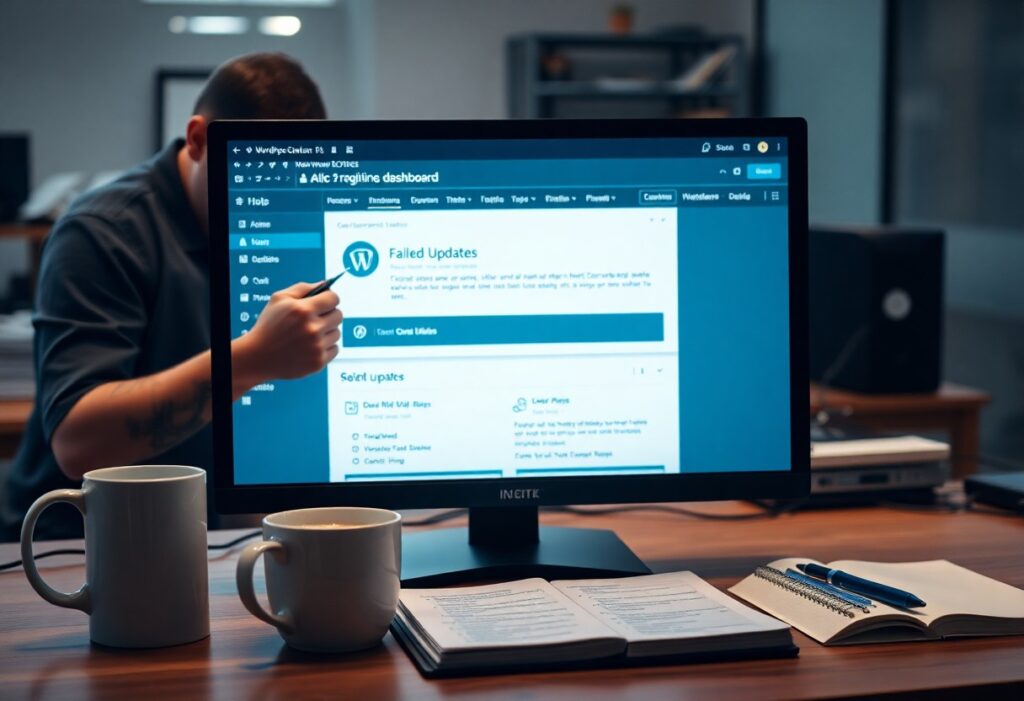Over the course of this guide, you will learn how to enhance your WordPress site’s technical SEO through effective use of robots.txt files, XML sitemaps, and crawl optimization. These tools are vital for guiding search engine bots to your most important content while preventing them from accessing less valuable pages. By implementing the strategies outlined here, you can improve your site’s visibility and ensure that search engines efficiently discover and index your content.
Understanding robots.txt
The robots.txt file plays a vital role in guiding search engine bots on how to interact with your website. By specifying which parts of your site should or shouldn’t be crawled, you can optimize your site for better SEO performance. This simple text file is fundamental for preventing unwanted indexing of certain pages, thereby enhancing your site’s visibility and control over your content.
What is robots.txt?
A robots.txt file is a plain text document located in your website’s root directory that instructs web crawlers on which pages to crawl or avoid. It uses a standard syntax to communicate with search engine bots, providing directives like “Disallow” and “Allow,” which help control bot access to specific areas, ensuring focused indexing.
How to Create a robots.txt File
Creating a robots.txt file is straightforward. You can manually create the file using a text editor or generate it using various WordPress plugins. Save the file as “robots.txt” and upload it directly to your website’s root directory. Ensure you adjust the specific “User-agent” directives to fit the needs of different crawlers.
To create a robots.txt file, start by using a simple text editor like Notepad or TextEdit. Define your directives clearly, such as “User-agent: *” to target all crawlers, followed by specific “Disallow” paths for pages you want to restrict. Save the file in the root directory of your site. WordPress plugins like Yoast SEO can simplify this process, allowing you to customize settings without needing coding skills. After uploading, verify its functionality using search engine tools to ensure it works as intended.
Optimizing XML Sitemaps
XML sitemaps are vital tools for improving your website’s visibility and ensuring search engines efficiently crawl your content. By providing a structured list of your site’s pages, you help search engines discover and index your content effectively, leading to better rankings and more organic traffic.
What are XML Sitemaps?
XML sitemaps are files that outline the structure of your website, listing URLs along with important metadata like the last updated date and prioritization levels. They serve as a roadmap for search engine crawlers, ensuring they don’t miss any significant pages when indexing your site.
How to Generate and Submit XML Sitemaps
Generating XML sitemaps for your WordPress site can be easily accomplished using plugins like Yoast SEO or Google XML Sitemaps. After creating your sitemap, you can submit it to Google Search Console and Bing Webmaster Tools to enhance visibility in search results. Regularly updating your sitemap is vital to reflect your latest content changes.
To generate XML sitemaps, install a plugin like Yoast SEO and enable the sitemap feature within its settings. Once your sitemap is created, you’ll be provided with a URL that you can submit directly to search engines. Submission typically involves entering your sitemap URL in the respective webmaster tools’ sitemap section. Check your sitemap periodically to ensure that any new content is included and that outdated URLs are removed, improving your site’s SEO effectively.
Crawl Optimization Techniques
Optimizing how search engines crawl your site is vital for achieving better visibility and indexing. Efficient crawl optimization ensures that search engines can access all important content without wasting resources on irrelevant pages, enhancing your site’s performance in search results.
Understanding Crawl Budget
Your crawl budget refers to the number of URLs that search engines will crawl on your site within a given timeframe. This budget depends on several factors including your site’s popularity and health. Site-wide issues can hinder search engines from efficiently using this budget, which can lead to missed opportunities in indexing important content.
Tips for Optimizing Your Website’s Crawlability
To improve your site’s crawlability, focus on simplifying your site’s structure and using internal links effectively. Ensure that important pages are easily accessible within a few clicks from the homepage. Keep your robots.txt file updated to prevent crawling of unimportant pages. Additionally, check for broken links and remove or redirect them to maintain a smooth crawling experience. After implementing these techniques, you should see a more effective use of your crawl budget.
- crawlability
- robots.txt
- internal links
- broken links
Improving your website’s crawlability requires attention to site structure and link architecture. Prioritize optimizing your site’s speed and mobile-friendliness, as these elements impact search engine behavior. Regular audits can reveal pages that hold back your crawl budget, allowing you to streamline your site further. Additionally, consider utilizing tools like Google Search Console to monitor crawl activity and identify points of improvement. After refining these elements, your site should enjoy enhanced indexing and better rankings.
- crawl budget
- site structure
- Google Search Console
- site speed
Important SEO Factors for WordPress
Several SEO factors can significantly impact your WordPress site’s performance in search results. Effective management of URL structures, optimizing meta tags, and using mobile-friendly themes are vital. Utilize strategies to enhance page speed and implement quality backlinking. This ensures a robust foundation for your site’s visibility.
- URL structures
- meta tags
- mobile-friendly themes
- page speed
- backlinking
Key Technical SEO Factors
Focusing on vital technical SEO factors allows you to enhance your site’s crawlability and indexing efficiency. Ensure your website is SSL-secured, optimize your schema markup, and maintain a clean site structure. Addressing errors in crawl reports and ensuring proper use of canonical tags also plays a critical role. This approach leads to improved user experience and search engine rankings.
- SSL-secured website
- schema markup
- site structure
- crawl reports
- canonical tags
Monitoring SEO Performance
Regular monitoring of SEO performance helps you understand the impact of your strategies and make necessary adjustments. Use tools like Google Analytics and Google Search Console to track traffic sources, keyword rankings, and site errors. Conducting routine audits can uncover areas for improvement, such as optimizing underperforming pages and enhancing user engagement. This proactive approach identifies trends and growth opportunities, ensuring your site remains competitive.
Best Practices for Using SEO Plugins
Utilizing SEO plugins in WordPress can significantly enhance your site’s visibility, but maximizing their effectiveness requires a strategic approach. Focus on configuring settings tailored to your specific website needs, regularly updating the plugin to leverage the latest features, and routinely monitoring performance metrics. Tailor your content for SEO best practices, ensuring your focus keywords and meta descriptions are optimized. Engage with the community through plugin forums for support and keep an eye out for updates and best practice guidelines from developers.
Popular SEO Plugins for WordPress
Various SEO plugins are available to elevate your WordPress site’s optimization. Among the most popular are Yoast SEO, known for its user-friendly interface and comprehensive features, and All in One SEO Pack, which offers robust tools for beginners and experts alike. Additionally, Rank Math has gained traction due to its advanced capabilities and free features. Each plugin presents unique advantages, so select one that aligns with your specific requirements.
Configuring Plugins for Optimal Performance
Configuring your SEO plugin for optimal performance involves adjusting settings that directly affect your site’s search visibility. Begin by setting your site’s homepage metadata, ensuring title tags and meta descriptions are compelling and keyword-rich. Utilize the plugin’s content analysis tools to refine your on-page SEO, adjusting content to meet guidelines for headings, keyword density, and readability. Regularly check the sitemap settings to ensure search engines can crawl your pages efficiently.
Proper configuration is not just about entering information; it involves ongoing optimization. Take advantage of built-in features like Google Search Console integration for real-time insights on performance. Periodically review your SEO strategy by analyzing how changes affect rankings and click-through rates, adapting your settings accordingly. Assess and customize advanced settings, including schema markup and social media metadata, to ensure your content stands out in search results and invites engagement.
How to Monitor and Test Your SEO Setup
Effective monitoring and testing of your SEO setup ensures that your strategies remain aligned with current search engine algorithms. Regular checks can help identify potential issues and provide insights into your website’s performance. By utilizing various tools and adopting a routine, you can maintain optimal visibility and usability for your audience, ultimately enhancing traffic and engagement.
Tools for Testing Technical SEO
Leverage tools like Google Search Console, Screaming Frog, and SEMrush to assess your technical SEO setup. These platforms allow you to analyze crawl errors, monitor indexation status, and review on-page SEO elements. Regularly testing your site with these tools provides actionable insights to rectify issues and optimize your visibility in search engines.
Regular Maintenance Checks
Implement a routine for regular maintenance checks to keep your technical SEO in top shape. Schedule monthly reviews of your robots.txt file, XML sitemaps, and site speed. Regular audits help you catch issues early, such as broken links or out-of-date content, which can negatively influence your search rankings.
During these maintenance checks, focus on reviewing analytics data to see how changes impact traffic and user behavior. Check for 404 errors and rectify them promptly to avoid losing potential visitors. Additionally, update your XML sitemap to include new pages, ensuring that search engines can effectively crawl your site. By establishing a routine check, you can maintain your website’s health and responsiveness to search engine updates.
Conclusion
On the whole, mastering WordPress technical SEO through effective management of robots.txt, XML sitemaps, and crawl optimization can significantly enhance your website’s visibility and performance. By understanding how to configure these elements, you empower search engines to index your site more effectively, ensuring that your content reaches its intended audience. Prioritize these strategies as you optimize your WordPress site, and you will see improved search rankings and user engagement over time.
FAQ
Q: What is the purpose of the robots.txt file in WordPress?
A: The robots.txt file instructs search engine crawlers which pages or sections of a website should not be crawled or indexed. This helps manage crawl budget and protect sensitive information.
Q: How do I create or edit the robots.txt file in WordPress?
A: You can create or edit the robots.txt file using an SEO plugin like Yoast SEO, or manually through an FTP client. In the plugin, navigate to the tools section and edit the file directly.
Q: What are XML sitemaps and why are they important for SEO?
A: XML sitemaps provide a structured list of URLs on your website for search engines. They assist crawlers in discovering and indexing content more effectively, improving overall site visibility in search results.
Q: How can I generate an XML sitemap for my WordPress site?
A: You can generate an XML sitemap using SEO plugins like Yoast SEO or Google XML Sitemaps. These tools automatically create and update your sitemap as new content is added to your site.
Q: What is crawl optimization in WordPress?
A: Crawl optimization involves optimizing your website to improve how search engine bots index your pages. This includes managing internal links, optimizing load times, and ensuring no duplicate content exists.
Q: How can I check if my robots.txt file is configured correctly?
A: You can check your robots.txt file by entering ‘yourdomain.com/robots.txt’ in your web browser. You can also use Google Search Console to analyze how Google interprets your file.
Q: What should I avoid in my robots.txt file?
A: Avoid disallowing important pages like your XML sitemap or necessary content that you want indexed. Additionally, steer clear of overly broad disallow rules that could restrict access to significant sections of your site.
Need expert help managing your WordPress site?
If "WordPress Technical SEO Guide – robots.txt, XML Sitemaps, and Crawl Optimization" was useful, imagine your site with expert care — speed, security, uptime, and updates handled for you.




